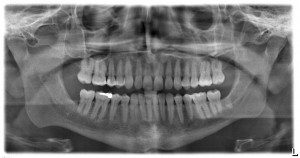Pros and Cons of Using a Water Pick
Five Signs of Gum Disease
 You think you’re doing a good job taking care of your oral health by brushing twice a day and flossing regularly. So it’s quite a shock to hear at your bi-yearly dental checkup that you have gingivitis or gum disease. If gingivitis isn’t treated it can turn into inflammation around the tooth, or periodontitis. This is when the gum pulls away from the tooth forming pockets where bacteria can gather and become infected.
Risk factors for gum disease include:
You think you’re doing a good job taking care of your oral health by brushing twice a day and flossing regularly. So it’s quite a shock to hear at your bi-yearly dental checkup that you have gingivitis or gum disease. If gingivitis isn’t treated it can turn into inflammation around the tooth, or periodontitis. This is when the gum pulls away from the tooth forming pockets where bacteria can gather and become infected.
Risk factors for gum disease include:
- Smoking.
- Diabetes.
- Certain medications.
- Hormonal changes.
- Genetics.
Symptoms of gum disease include:
- Loose teeth.
- Teeth that look “longer.”
- Changes in gums including bleeding, swelling or redness.
- Gums which have receded or pockets that have formed around the tooth.
- Chronic bad breath that isn’t controlled with mouthwash or breath spray.
During your dental exam if your dentist or hygienist suspects gum disease, you will be asked about personal habits such as smoking and alcohol consumption. Your gums will be closely inspected and if pockets have formed, a miniature ruler called a probe will be used to measure the depth of each area. X-Rays may be taken to see if any bone loss has occurred.
Treatment of gum disease includes:
- Top priority is to control any active infection.
- Deep cleaning called scaling and root planing may be necessary. Scaling removes tarter from the tooth and below and around the gum line while planing removing irregular areas when germs and bacteria can gather.
- Either OTC or prescription medications maybe prescribed to control bacteria growth.
- Dental surgery is a possibility depending on the severity or if the above measures don’t stop the inflammation.
Concerned you may have gingivitis? Please schedule an appointment with Ellis Dental today.
Benefits of Dental X-Rays
Ellis Dental Pano X-Ray
Teeth are tricky. Most people assume that when you look at a tooth you are seeing it almost in its entirety but that’s not true. Only about one third of the total tooth is located above the gum line. And while certain things, mainly pain, alert us to when things go wrong, by taking precautionary measures and having dental X-rays done on a regular basis, many times concerns can be discovered and corrected before becoming a painful problem.
When you join our practice as a new patient a complete set of X-rays will be taken so we can see, if in fact, there are any underlying challenges, as well as possibly determine procedures that have been performed in the past. And X-rays don’t just tell what’s going on with your teeth; they also allow us to see the surrounding tissue.
Advantages of dental X-rays include:
Discovering decay that may not be seen during a normal oral exam.
- Checking for bone loss from possible gum disease.
- Decay can still occur under a pre-existing filling. An X-ray can detect this.
- Exposing infections, abscesses, cysts and in some cases of tumors.
- Dental X-rays also aid in certain dental procedures including implants, bridge placement and the status of wisdom teeth.
For those of you concerned with possible exposure to excess radiation, we here at Ellis Dental are totally committed to your overall health and safety. Please feel free to discuss any reservations you may have at your next appointment.
Looking for a caring family dental practice in the Crestwood area of St. Louis? Ellis Dental is presently accepting new patients. Visit us online for more information or call 314.965.1334, we can’t wait to meet you!


